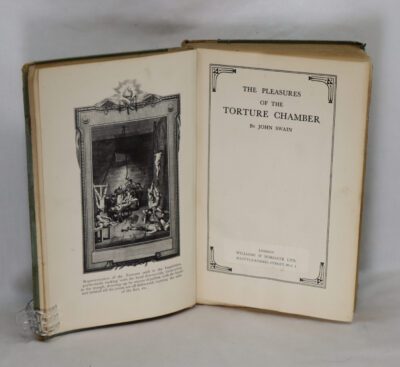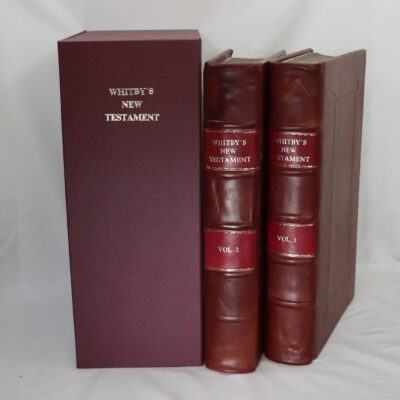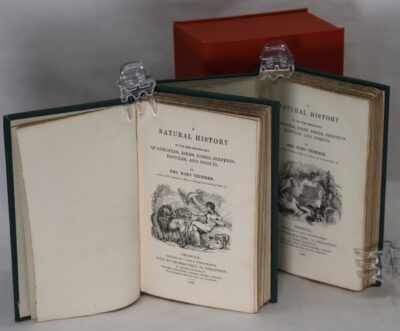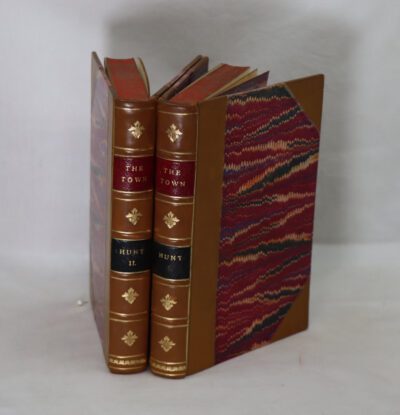The Seasons.
By James Thomson
Printed: 1809
Publisher: Vernon Hood & Sharpe. London
Edition: Stereotype edition
| Dimensions | 11 × 17 × 3 cm |
|---|---|
| Language |
Language: English
Size (cminches): 11 x 17 x 3
Condition: Fine (See explanation of ratings)
Your items
Item information
Description
Rebound. Brown calf binding with green title plate and gilt banding , decoration and lettering on the spine.
F.B.A. provides an in-depth photographic presentation of this item to stimulate your feel and touch. More traditional book descriptions are immediately available.
A lovely edition prepared for Fore-Edge
The Seasons is a series of four poems written by the Scottish author James Thomson. The first part, Winter, was published in 1726, and the completed poem cycle appeared in 1730.
The poem was extremely influential, and stimulated works by Joshua Reynolds, John Christopher Smith, Joseph Haydn, Thomas Gainsborough and J. M. W. Turner.
The poem was published one season at a time, Winter in 1726, Summer in 1727, Spring in 1728 and Autumn only in the complete edition of 1730. Thomson borrowed Milton’s Latin-influenced vocabulary and inverted word order, with phrases like “in convolution swift”. He extended Milton’s narrative use of blank verse to use it for description and to give a meditative feeling. The critic Raymond Dexter Havens called Thomson’s style pompous and contorted, remarking that Thomson seemed to have avoided “calling things by their right names and speaking simply, directly, and naturally”.
The lengthy blank verse poem, reflecting on the landscape of the countryside, was highly influential and much liked for at least a century after its writing. Especially lavish editions were produced between 1830 and 1870 in Britain and America.
A dispute over the publishing rights to The Seasons gave rise to two important legal decisions (Millar v. Taylor; Donaldson v. Beckett) in the history of copyright. In 1750, the London bookseller Andrew Millar reprinted the 1746 edition of The Works of James Thomson vol. 1. and included a prefatory note that emphasized the author’s preference for the 1746 edition. Millar may have referred to the 1744 edition because it was the first expanded version of Thomson’s famous poem, it sold quickly, and it may have helped to clarify for Millar that he owned the highly valuable copyright of this book in perpetuity. Thomas Macklin included an extract from Autumn in his Poet’s Gallery. The painting which used his wife, daughter and Jane Potts as models was created by Joshua Reynolds and then it was engraved and prints were sold.
Thomson’s The Seasons was translated into German by Barthold Heinrich Brockes (1745). This translation formed the basis for a work with the same title by Gottfried van Swieten, which became the libretto for Haydn’s oratorio The Seasons.
Artists such as Thomas Medland, Anker Smith and John Neagle (1792) created engravings to accompany the poems. A bathing scene from Summer inspired paintings by Thomas Gainsborough, William Etty (Musidora: The Bather ‘At the Doubtful Breeze Alarmed’) and Johann Sebastian Bach the Younger.
The piece was translated into French by the naturalist Joseph-Philippe-François Deleuze (1753–1835).
Oscar Wilde included this poem, only half-sarcastically, in a list of ‘books not to read at all’.
James Thomson (c. 11 September 1700 – 27 August 1748) was a British poet and playwright, known for his poems The Seasons and The Castle of Indolence, and for the lyrics of “Rule, Britannia!”.
Want to know more about this item?

Share this Page with a friend













